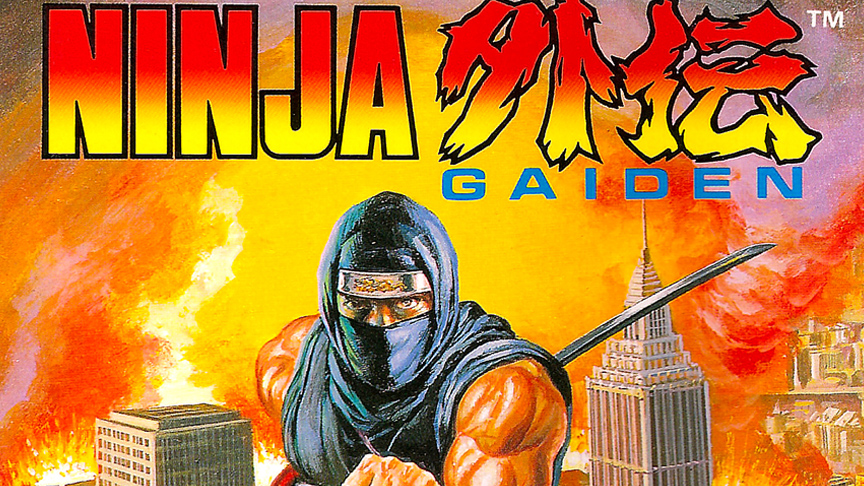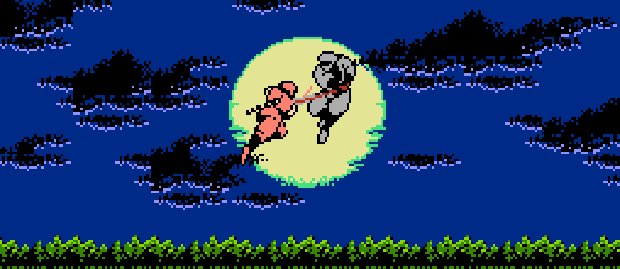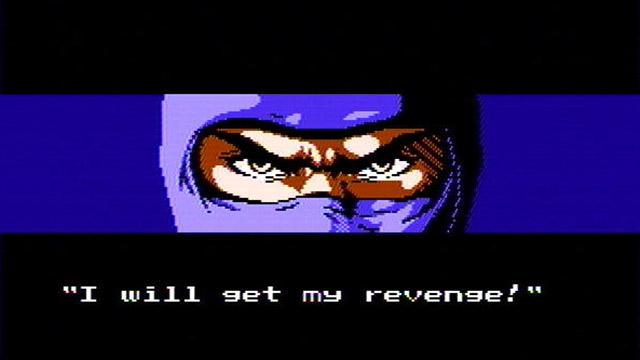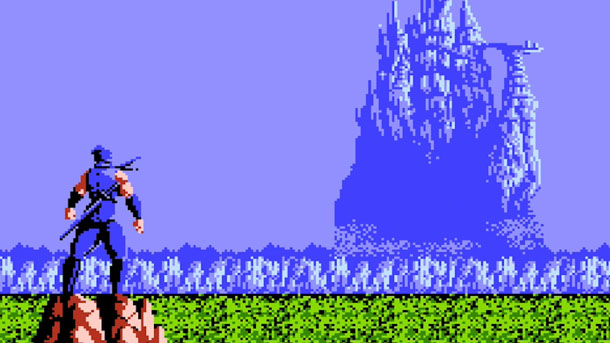Ninjas were a staple of pop culture in the 80s and 90s. They were everywhere. Movies, TV, cereal boxes… and especially video games. Though history depicts them as silent, efficient killers, they underwent a gradual transformation into heroes of a sort once Western media got a hold of them. Modern Japan, all too happy to go along, took ample opportunity to churn out ninja-themed titles during the video game boom of the aforementioned two decades.
Ninja Gaiden was one such game, and in fact stands out among the sub-genre as one of the most playable and memorable to have been developed and released for the NES. Called Ninja Ryukenden in Japan and released as Shadow Warriors in Europe, Ninja Gaiden kicked off what was to become a small franchise, which was eventually rebooted for more recent consoles in the past few years. The original broke ground in terms of gameplay, story depth, and overall quality. To clarify: This article discusses the first entry into the series of NES games, not the arcade beat-em-up, which (while identical in title and developed by the exact same company, and even released the very same year) is a completely different game with a different plot and play style.
Ninja Gaiden’s protagonist, Ryu Hayabusa, begins his quest with a simple goal: to find out who (presumably) slew his father in a ninja duel. As the plot progresses between game stages, the story develops and broadens into something far greater: a mission to stop plans that could ruin the world. This story telling is accomplished by use of some very sharp cut scenes, which feature impressive art, parallaxing, and surprisingly well written dialogue. Character development and a supporting cast are even present, a level of detail that is now taken for granted in modern gaming. I’m not suggesting that it’s novel-quality writing, but it is steps above the standard clumsily-translated stories so often encountered in NES games. I admit that I am a gamer who often skips cut scenes when possible, but I found myself actually looking forward to the storyline’s progression as I played. Ninja Gaiden’s soundtrack is appropriately thematic, with moody music during cut scenes and high-energy rhythms during actual gameplay. I especially like these two themes, but the entire soundtrack is excellent.
The game’s play style is mostly standard side-scroller material, but things have been added that really enhance the theme and add a sense of challenge. When Ryu jumps against a vertical surface, he can cling to it, and hop off when he wishes. If two parallel vertical surfaces are near enough to each other, this can be used in series to “climb” upward and downward. This trick is crucial to bypassing obstacles and reaching the end of certain levels, and really provides a solid ninja element. So do the powerups Ryu can pick up; fueled by “spiritual strength,” they allow him to throw shuriken (ninja stars), hurl wheels of fire, perform spinning slashes as he jumps, and more. Powerups and “spiritual strength” are gained in a fashion reminiscent of Castlevania: each level has torches or some other recurring fixtures that you must chop down with your sword, picking up what falls out.



The difficulty curve in Ninja Gaiden is respectable, but not daunting. Novices will struggle a bit with the boss fights, but once you get the hang of how to fight like a ninja, progress becomes easier to make. One notable feature of the levels is that if an enemy’s spawning point goes off-screen (as in, you walk far enough away from it), the enemy will be back when you return. In fact, some mobile enemies spawn continuously from that point if you remain still. There are, of course, tricks and glitches; it bears mentioning that the spinning slash powerup, if saved up for later use, can obliterate certain end-stage bosses in short order. Otherwise, Ninja Gaiden is an exercise in patience, timing, and seizing the moment – all appropriate skills for a practitioner of ninjitsu.
Two sequels were released for the NES in 1990 and 91, both of which ramped up the gameplay complexity but also expanded Ryu’s ninja-style mobility. The franchise was also revived in the early 21st Century, starting with a 2004 Xbox action-adventure title. Most recently, a multi-platform title, Yaiba: Ninja Gaiden Z, was released in 2014. It would seem our fascination with ninjas is far from over… and I’m glad for it. Ninjas are awesome.
And as you’ll see later this month, RetroFans, I’m not done talking about ninjas just yet. I’m going to talk about a game featuring everyone’s favorite ninjas…







